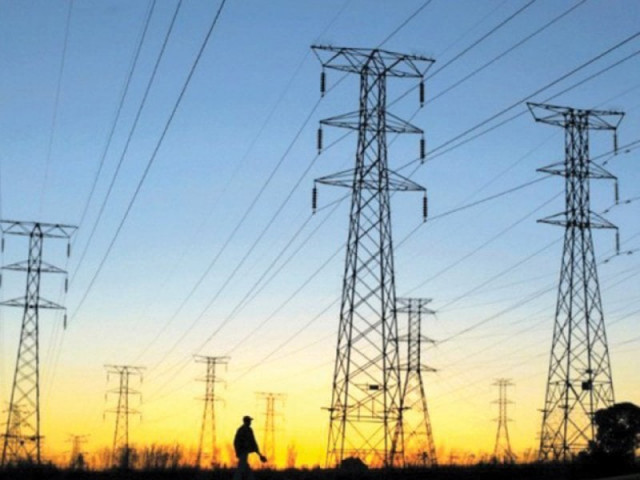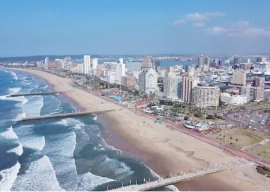
The installed power generation capacity reached 29,573 megawatts by February 2018 compared to 22,812MW in 2012-13, the government said in the Pakistan Economic Survey 2017-18.
During the period, 39 projects with cumulative capacity of 12,230MW were connected to the national grid. With power shortages being the prime economic challenge five years ago, the government said it cleared Rs480 billion worth of circular debt in mid-2013 which led to the addition of 1,700MW and helped ease load-shedding considerably.
SC concerned over N-power plants near populated areas
However, the survey kept mum on the current volume of circular debt that has once again plagued the energy chain and is estimated to have crossed Rs1 trillion.
The government failed to increase the share of hydroelectric power - the cheapest source of energy - in the total energy mix during its tenure. Instead, its contribution went down from 31% in Jul-Feb 2012-13 to 27% in the same period of FY18, which the government blamed on lower water availability.
However, there was no change in the share of thermal power generation, which had been a major contributor to the circular debt. Its share stood at 64% in Jul-Feb 2012-13 and was at the same level in Jul-Feb FY18.
Among other fuels, the share of nuclear power edged up from 5% to 7% and that of coal from 0% to 2%. Pakistan also started importing liquefied natural gas (LNG) during the current government’s tenure, which was called an economical fuel compared to other petroleum products, to bridge the widening energy deficit. In Jul-Feb FY18, 63% of LNG (401 million cubic feet per day - mmcfd) was supplied to different power plants which included Bhikki, Haveli Bahadur Shah, Balloki, Halmore, Orient, Rousch, Kapco, Saif and Sapphire. The remaining LNG was provided to fertiliser plants, industrial units and transport sector.
Bill recoveries
According to the survey, significant improvements were made in the recovery of dues that brought a meaningful decline in transmission and distribution losses.
Over the past five years, average recovery remained above 90%. In Jul-Mar FY18, bill recovery stood at 89.5% constrained mainly due to only 24% recovery by the Quetta Electric Supply Company.
In Jul-Mar FY18, overall transmission and distribution losses came down to 16.8% regardless of some anomalies.
Among high loss-bearing companies, Peshawar Electric Supply Company recorded 37% transmission and distribution losses, followed by Sukkur Electric Power Company, Hyderabad Electric Supply Company and Quetta Electric Supply Company where losses were 35%, 29% and 22% respectively.
Renewable energy
At present, renewable energy constitutes only 2% of the electricity generation. Over the past five years, 18 wind power projects of 937.27MW capacity started commercial operation while six solar power plants of 418MW began production.
For power generation from bagasse, six sugar mills having cumulative capacity of 201.1MW started operation.
Over the past one year, there had been no significant change in the pattern of electricity consumption. Although the share of households edged up to 51%, it was offset by a 1% decline in the share of industry.
Hydrocarbon exploration
Foreign direct investment shrank considerably in oil and gas exploration during the current government’s tenure. It had been recorded at $600 million in FY14 and came down to $200 million in Jul-Mar FY18.
Annual consumption of petroleum products in Pakistan was calculated at around 26 million tons in FY17. Domestic crude oil production meets only 15% of the country’s requirement whereas 85% of the demand is met through imports.
Owing to low supply of gas to compressed natural gas (CNG) filling stations and consumption of motor gasoline in generators, the demand for the latter increased up to 25% over the past five years, which necessitated the reopening of abandoned oil depots.
Six abandoned depots were reopened due to which storage capacity of diesel, petrol, kerosene oil and light diesel oil increased.
PTI set to hold power show at Minar-e-Pakistan
The share of oil consumption in power production dropped significantly while the share of transport vehicles rose. “This is taking place as new power plants are moving towards cheaper fuels whereas increase in the share of transport is mainly due to the decline in domestic prices of petrol and higher imports of used cars,” said the survey.
In Jul-Feb FY18, the share of oil consumption in transport vehicles increased to 64.4% compared to 57.2% in the same period of previous year. The share of oil consumption in power production dipped to 26.4% from 33.2% during the period.
This led to a small hike in the domestic crude oil extraction as in Jul-Feb FY18, 21.8 million barrels were produced compared to 21.5 million barrels in the corresponding period of previous year.
Domestic gas supplies contributed about 38% to the total primary energy mix. The government said it was pursuing policies to enhance gas production as well as imports to meet the growing demand.
In Jul-Mar FY18, average natural gas consumption stood at about 3,837 million cubic feet per day (mmcfd) including 632 mmcfd of LNG compared to 3,205 mmcfd last year. Power producers continued to remain the largest consumers of gas followed by domestic consumers.
Published in The Express Tribune, April 27th, 2018.
Like Business on Facebook, follow @TribuneBiz on Twitter to stay informed and join in the conversation.


















COMMENTS
Comments are moderated and generally will be posted if they are on-topic and not abusive.
For more information, please see our Comments FAQ